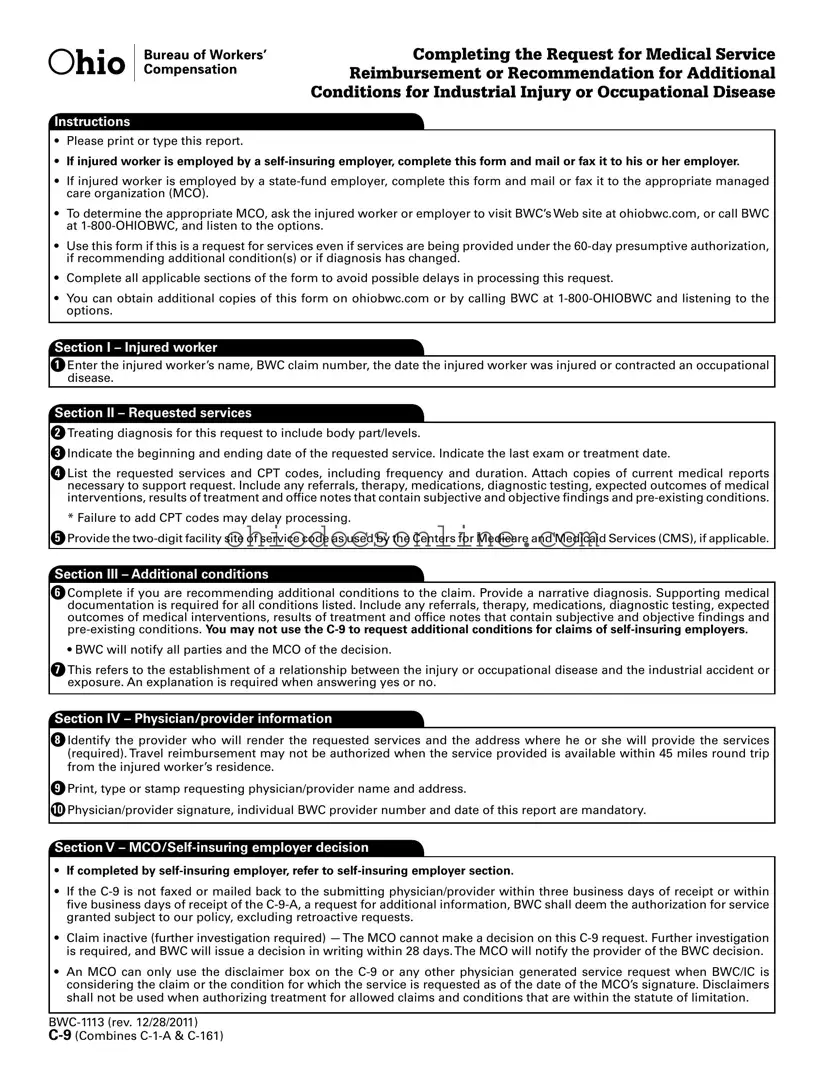Ohio Bwc Writable C 9 Template in PDF
The Ohio BWC Writable C-9 form serves as a crucial document for requesting medical service reimbursement or recommending additional conditions related to industrial injuries or occupational diseases. This form is essential for both self-insuring and state-fund employers, guiding the submission process to ensure that injured workers receive the necessary medical services. Proper completion of the C-9 form can significantly impact the efficiency of the claims process and the timely provision of medical care.
Open Editor
